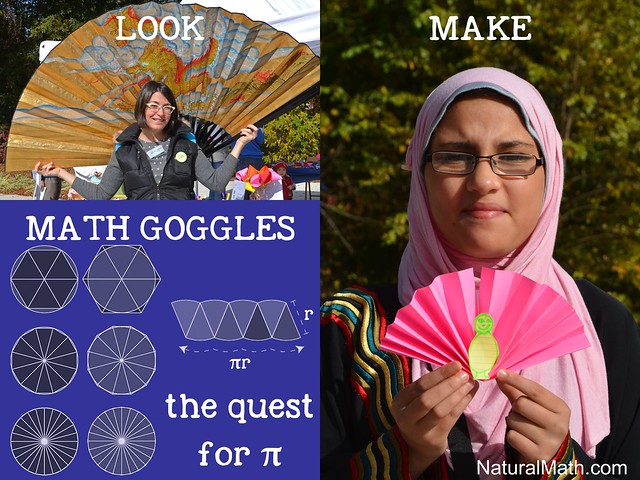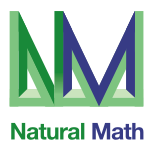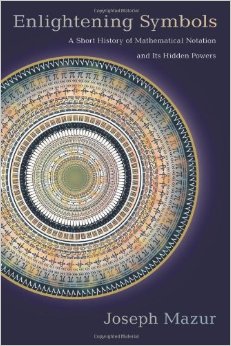Math Circles for Elementary School Students – Book Review
Why are there so few math circles, particularly for younger children? One of the reasons is the belief that very young kids are simply not ready for complex math. Another reason is that finding deep and engaging math activities, adapted for this younger audience, is itself a challenge. Natasha Rozhkovskaya’s new book, Math Circles for Elementary School Students, helps deal with both these difficulties.
The book is based on Natasha’s experience leading a highly popular program for elementary school students at the Berkeley Math Circle. In the true “if you build it, they will come” fashion, the Circle attracted so many youngsters, that it had to be split into several smaller sections. What was originally thought of as a one-semester pilot program is currently in its 3rd year. Its young students return semester after semester to continue learning about such complex modern math ideas as symmetry, fractals, probability theory, logic, knot theory.
Natasha’s book addresses the issue of “too young for this kind of math” early on, in the first few pages. The rest of the book is a delightful collection of activities that deals with the activities challenge – what can young children do during the circle. There are detailed plans and activity descriptions for 28 math circle meetings (15 from the original BMC and 13 from a program Natasha started at the Kansas State University). There’s also something just as valuable as the lesson plans included with the original 15 lessons – Natasha’s reflections and notes on how her students worked through the activities.
In the video, I give some more details about the book and answer a few of Maria’s questions. I highly recommend it, particularly for those math circle leaders who are just starting out or who are starting to work with younger students. You can purchase this book from American Mathematical Society.
Posted in Grow
Family math: baby trinomials, can’t get 20 bagels, symmetry yoga aftermath
This is a collection of math sparks friends of Natural Math send us. Have something little (or big) to share? Email your videos, pictures, or text to maria@naturalmath.com
Sheryl Morris shares a a photo of playtime with a body-size Montessori Trinomial Cube from her colleague Martine Hestnes Healy from Cork, Ireland. Yay for baby algebra!

Dragan Tminic and Dor Abarahamson share a found picture. I used their comments for the caption:

Jennifer Rukhra writes:
After a round of symmetry yoga, my boys enthusiastically jumped into making these symmetrical paper cutouts. In the process, I said, “Isn’t math awesome?” And my oldest exclaimed, “This is math?!?” Find his Darth Vader mask in the attached photo.
We have four chapters of symmetry games in the Moebius Noodles book, including movement games and paper cutouts. Symmetry Yoga is Jennifer’s own invention.

Posted in Grow
The Dot and the Line Math Trek
Math Trek is a scavenger hunt game for families or informal groups. You walk around, discover math using the clues on the Trek Card, and take pictures of it.
During our Math Treks participants tell us about a strong, pleasant, slightly weird feeling: “I see your math in trees, buildings, people – everywhere! Now that you’ve shown me how to look, I can’t unsee it!” We call this effect math goggles. When you find the same pattern in several very different places, your mind automatically tags that pattern as important and universal, and encourages you to search for that pattern everywhere.
Natural Math, together with Cary Visual Art, ran a Math Trek through the downtown Cary sculpture exhibit on November 8. Our math and our art focused on dimensions, integration, and differentiation – in ways accessible even to young children. It was a cool, sunny Saturday, perfect for outdoor family fun. It was so good to see all the kids happily playing with calculus!
Now you can use the Trek Card we developed with your family and friends. We like to combine Math Trek with quick craft activities, as you can see in photos below. That way you not only discover mathematics all around but also make your own. Click to download the Trek Card PDF. If you would like to help us organize a math scavenger hunt in your area, drop us a line at reach.out@naturalmath.com



P.S. The name of the Trek comes from a 1960s book.
Posted in Make
Math Scavenger Hunt Nov 8, Enlightening Symbols, Make Thinky the Dragon: Newsletter November 4
Subscribe and read archives
Pinterest | Twitter | Facebook | Google+
Hello from Natural Math! Send us your questions, comments, and stories of math adventures at moby@moebiusnoodles.com

In this newsletter:
- Join Math Scavenger Hunt on Saturday November 8
- Enlightening Symbols: learn about history and culture in an online Math Future event with the author Joseph Mazur on Wednesday November 5
- Make it: Thinky the Dragon optical illusion
Join us for a mathematical scavenger hunt through art and nature
If you live near Cary, NC, join us on Saturday November 8, from 10 AM to noon as we explore the many dimensions of art and nature. This is a great opportunity to connect math to the world around you. We suggest you RSVP for this event by emailing cva@caryvisualart.org
If you don’t live near Cary, but would love to help us organize a math scavenger hunt in your area, drop us a line!
Is it for adults only?
Not at all! Our scavenger hunts are open to all ages. No prior knowledge of specific math concepts is required.
How much does it cost?
The event is free. It is a part of the Year of Sculpture initiative by the Cary Visual Art council.
What will it be like?
Check out this short video from one of our previous Math Treks. (That’s what we call our math scavenger hunts.)
For this Trek, meet us on the green in front of the Cary Arts Center to pick up your Math Trek card. It will have all the clues you need to successfully complete the Trek. Walk around Downtown Cary, enjoy this year’s sculptures, notice beautiful math, and take pictures of your finds. Come back to the green and try our hands-on activities for all ages.
Will I be able to complete the challenges if I am not a math whiz?
Absolutely! There are many answers to each clue and no prior knowledge of math is required. Open-mindedness, creativity, and curiosity rule the day! Check out a few sample clues from this Trek:

Art by Mary Jo Hoffman, Eric Troffkin, and Tom Friedman.
Will there be prizes?
Complete the challenges, e-mail us your photos, and be entered into a drawing to win a copy of our book, Moebius Noodles: Adventurous Math for the Playground Crowd.
How can I volunteer for this event?
We are so happy you’ve asked! You can volunteer at our math craft table or help us lead the tours. Email us at moby@moebiusnoodles.com
Learn about the history of math symbols at our upcoming Math Future online talk with the author Joseph Mazur

Hardly any math symbols were used before the sixteenth century. What did mathematicians rely on for their work before then? And how did mathematical notations evolve into what we know of today? Enlightening Symbols explains the fascinating history behind the development of our current mathematical notation system, shows how symbols were used initially, how one symbol replaced another over time, and how written math was conveyed before and after symbols became widely adopted.
On Wednesday, November 5 at 12pm EST, join us for the open, free online event in the Math Future series. Dr. Joseph Mazur will talk about his new book, Enlightening Symbols. Come and listen to a short presentation, chat with like-minded people in the audience, and ask Joseph questions.
https://naturalmath.com/math-future-event-registration/
Math Maker Corner
As soon as we saw this Thinky the Dragon video, we wanted to make one (or more) of these cuties ourselves. And you can too, by downloading and printing a free template with instructions from ThinkFun. How is this “hollow face” optical illusion mathematical? Watch this video to find out!
Sharing
You are welcome to share this newsletter online or in print.
Talk to you soon! Dr. Maria Droujkova and Yelena McManaman
Posted in Newsletter





